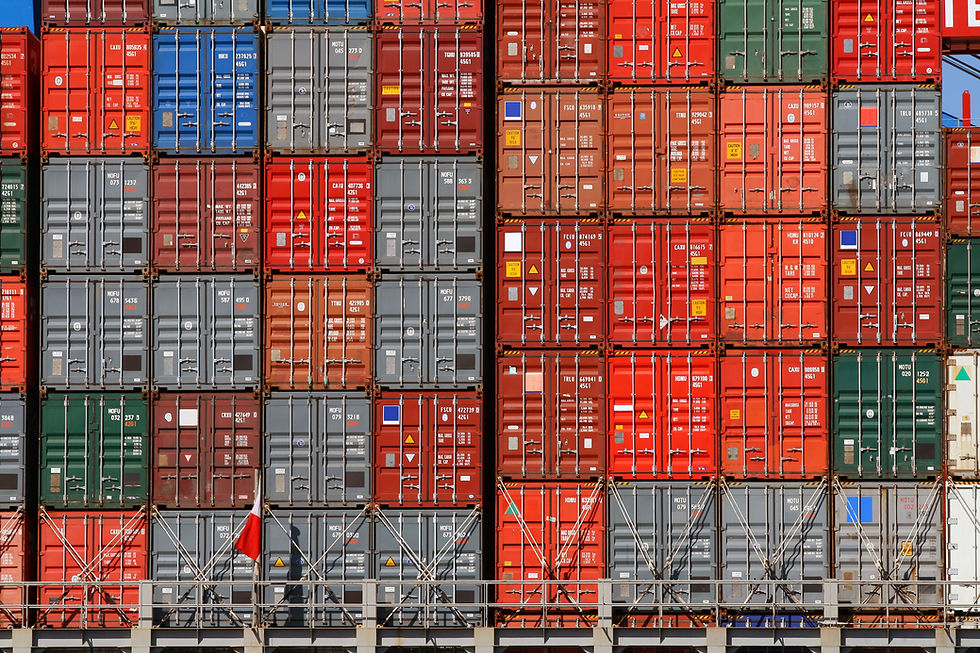Shipping from China to Belgium
- CNXtrans

- Aug 5, 2024
- 3 min read
The trade corridor between China and Belgium has evolved into a critical artery in the global supply chain. The robust economic ties between the two nations, coupled with Belgium's strategic position as a gateway to the European Union, has made this route a preferred choice for businesses engaged in international trade. This article delves into the intricacies of shipping from China to Belgium, encompassing transportation modes, customs regulations, logistics, challenges, and opportunities.
Shipping Modes from China to Belgium
The choice of transportation mode for shipping goods from China to Belgium is contingent on factors such as the nature of the cargo, required delivery time, and budgetary constraints.
Sea Freight: Historically the most prevalent method, sea freight remains a cost-effective
option for shipping large volumes of non-perishable goods. Major Chinese ports like Shanghai, Ningbo, Shenzhen, and Guangzhou serve as departure points, while Antwerp, Belgium's primary port, is the primary destination. Transit times typically fluctuate between 30 to 45 days, influenced by factors such as vessel schedules, port congestion, and weather conditions.
Air Freight: Ideal for high-value, time-sensitive, or perishable goods, air freight offers significantly reduced transit times compared to sea freight. While more expensive, it guarantees rapid delivery, minimizing inventory holding costs and reducing the risk of product obsolescence. Major international airports in China and Belgium facilitate air cargo operations.
Rail Freight: Gaining traction in recent years, rail freight presents a middle ground between sea and air freight in terms of cost and speed. This mode is particularly suitable for goods with moderate value and delivery time requirements. The trans-continental rail network connecting China and Europe has expanded, offering increased frequency and reliability.
Customs and Documentation
Navigating customs formalities is a crucial aspect of international shipping. Importers and exporters must adhere to the customs regulations of both China and Belgium to ensure smooth clearance and avoid penalties. Essential documentation typically includes:
Commercial Invoice: A detailed description of the goods being shipped, including quantity, value, weight, and dimensions.
Packing List: An itemized inventory of the contents of each package.
Bill of Lading (for sea freight) or Air Waybill (for air freight): A contract of carriage between the shipper and the carrier.
Certificate of Origin: Verifies the country of origin of the goods.
Import/Export License: Required for specific goods subject to trade restrictions or quotas.
Customs duties and taxes are levied on imported goods based on their classification, value, and country of origin. Importers must determine the applicable tariffs and prepare for necessary payments.
Logistics and Supply Chain Management
Efficient logistics and supply chain management are paramount for optimizing shipping operations and minimizing costs. Key considerations include:
Inventory Management: Effective inventory control is essential to avoid stockouts or excess inventory. Demand forecasting and supply chain visibility are crucial components.
Warehousing and Distribution: Many businesses establish warehouses in Belgium to facilitate efficient distribution within the European market. Strategic warehouse locations can help reduce transportation costs and improve delivery times.
Transportation Management: Selecting the appropriate transportation mode, carrier, and routing is vital. Load optimization and consolidation can help reduce shipping costs.
Supply Chain Visibility: Real-time tracking of shipments provides valuable insights into the supply chain, enabling proactive issue resolution and improved customer service.
Challenges and Opportunities
While the China-Belgium trade route offers immense potential, it also presents challenges:
Economic Fluctuations: Global economic conditions can impact trade volumes and freight rates.
Geopolitical Factors: Trade tensions and policy changes can disrupt supply chains.
Port Congestion: Increased trade volumes can lead to port congestion, causing delays and additional costs.
Environmental Concerns: The shipping industry is under pressure to reduce its carbon footprint, leading to increased costs and operational complexities.
Despite these challenges, the China-Belgium trade corridor continues to offer significant opportunities:
Growing Consumer Market: Belgium's affluent population and increasing consumer spending create demand for a wide range of products.
E-commerce Expansion: The rise of online shopping has fueled demand for efficient and reliable cross-border shipping services.
Infrastructure Development: Investments in transportation infrastructure, such as ports and rail networks, are enhancing connectivity.
Technological Advancements: Digital technologies are transforming logistics operations, enabling greater efficiency and transparency.
Shipping from China to Belgium is a complex endeavor that requires careful planning and execution. By understanding the intricacies of transportation modes, customs regulations, and logistics, businesses can optimize their supply chains, mitigate risks, and capitalize on the opportunities presented by this dynamic trade route.
Need a China-based Shipping Agent to help you consolidate and ship internationally from China?





Comments